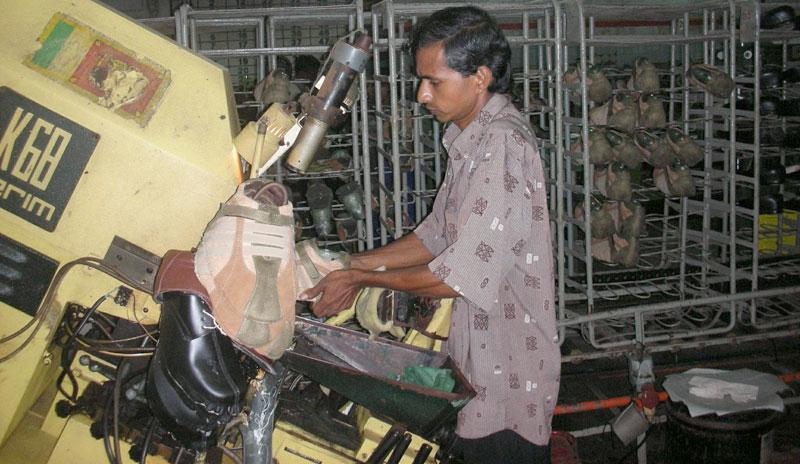
The removal of para tariffs enabling foreign products to come into the country without any restriction, on top of the opening up the already saturated local footwear manufacturing industry to foreign companies, is a double whammy to local footwear manufacturers who have kept the age old industry alive despite many challenges.
Local footwear manufacturers say that the 2018 Budget is a huge boost to liberalisation which all preceding budgets since 1977 advocated, taking away the protective measures adopted prior to the introduction of the open economy to safeguard local industries.
“There were quotas, licences and tariffs to restrict the free flow of foreign goods to the country before the liberalisation of the economy in 1977. However, thereafter the economic policies paved the way for anyone to import raw material, machinery and finished products for the local market. As a result many small and medium scale industries which could not cope collapsed,” a leading footwear manufacturer in the country said.
Sri Lanka Footwear and Leather Products Manufacturers’ Association Committee member and DSI Samson Group of Companies, Managing Director Kulathunga Rajapaksa said the local manufacturing industry survived, if at all, is because of tariffs and para tariffs.
“‘The removal of para tariffs for around 253 products immediately and thereafter, for thousands of products, will create an oversaturation in the domestic market causing the closure of industries. Why do we need to remove para tariffs for salt, yoghurt and butter when there is ample production in the country,” Rajapaksa said.
Footwear manufactures said the move to lift para tariffs is to please the countries with which free trade agreements are to be signed.
“There is an opinion by certain exporters who say there is no need to look into the trade balance. The 2018 Budget is a program to please these countries,” they said.
Footwear manufacturers said they will voice their strong opposition to the granting of approval to the Indian footwear company to set up operation and take away foreign exchange from the country.
“What is the rationale in granting approval to a company that has technology that is no better than the street cobbler, importing all the raw material, providing an abysmally low number of employment opportunities to Sri Lankans and investing only US$ 250,000,” Rajapaksa queried.
The Indian footwear manufacturer will produce around two million pairs providing work to around 200 people whereas around 250,000 people are benefitted by around 150 small and medium local footwear manufacturers in Sri Lanka.
“The local footwear market is saturated and on top of it, stock lots from China makes matters worse,” Rajapaksa said.
In a letter to the Minister of Finance, the Association states that the Indian footwear company, VKC Sri Lanka, is a sister company of the Indian parent company and therefore, it will be difficult to monitor the transfer price mechanism adopted by this company to avoid normal Customs duties and levies. All the machinery to be imported are second hand with old technology; foreign exchange can be remitted as there are no valuations of the machinery.
The population of Sri Lanka is 21 million and of this, may be about 80% use footwear. The VKC factory has been granted permission to make 2.1 million pairs per annum. This covers 10% of the population. Today, the footwear industry in Sri Lanka employs over 350,000 workers including SME sector and cobblers.
Many Indian workers may be employed in this proposed factory under the guise of shoe technicians, thereby draining the foreign exchange earned by other exports.
The technology that this proposed factory will use has been used by the SME sector for over five years.
The proposed investment of US $ 250,000 which is equal to Rs. 40 million, is not enough even to erect a basic building to launch this project. Hence, they plan to have this project in a rented building.
